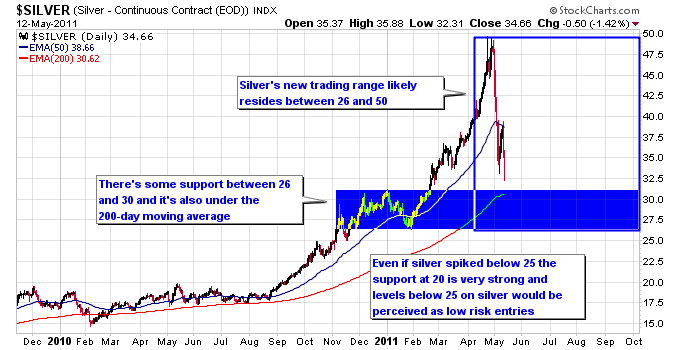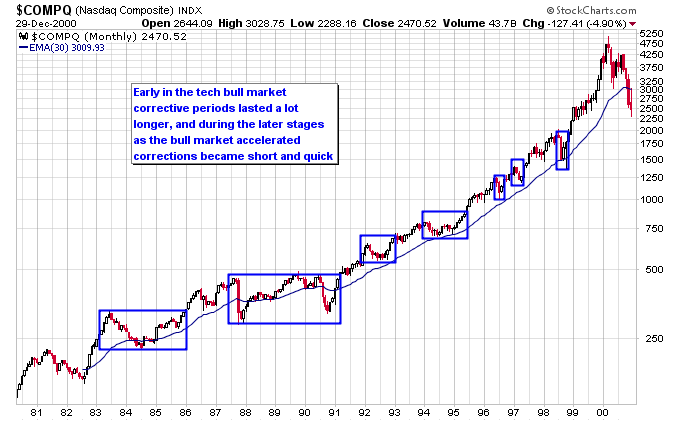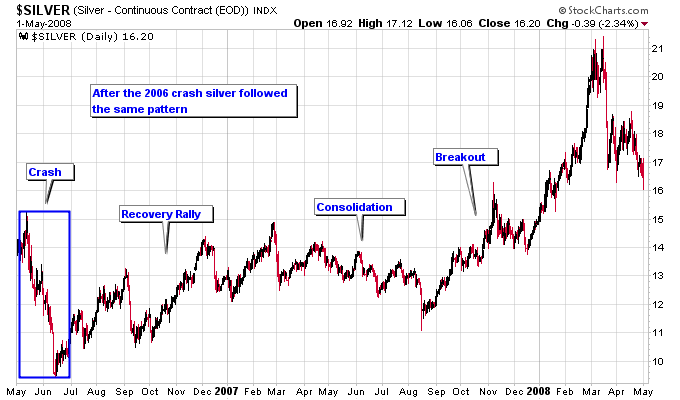Silver has followed a repetitive spike, crash, and consolidate pattern
during this silver bull market. The bulk of each crash lasted
approximately two months, so if this crash follows the same pattern it
should bottom sometime in June. Then silver should stage a recovery
rally. The recovery rally has tended to be followed by a consolidation
period, where silver just grinds sideways. If the crash is the “scare
you out” phase, then the consolidation after the recovery rally is the
“wear you out” phase. The goal of both of these phases is to recreate
the wall of worry necessary to drive the next major rally.
Markets typically need time to repair the damage after a crash and
that is essentially what the recovery rally and consolidation phases
accomplish. It usually takes a period of time and multiple attempts for
a market to overcome the resistance created by a sharp crash.
Therefore silver investors should adjust their expectations and prepare
for a sideways grind after the current crash has run its course.
Expecting silver to race back up to 50 and make new highs right away is
not out of the realm of possibility, but it isn’t probable based on how
markets normally behave.
Based on past precedent the new trading range for silver is likely to
be from the mid-20s to the recent high right below 50. There’s some
support on the chart between 26-30 and this zone also resides underneath
the 200-day moving average, so that area would likely prove tough to
penetrate to the downside.

It should be interesting to see how long it takes silver to repair
the damage done before it can attempt to stage a real breakout past 50.
One important thing to note about bull markets is they tend to overcome
corrections quicker as the bull market becomes more mature and
accelerates to the upside. This next chart of the tech bull market
shows how the market consolidated for years at a time early in the bull
market, but later in the bull market it only took a matter of months to
complete each consolidation period.

next.big.trade.com


